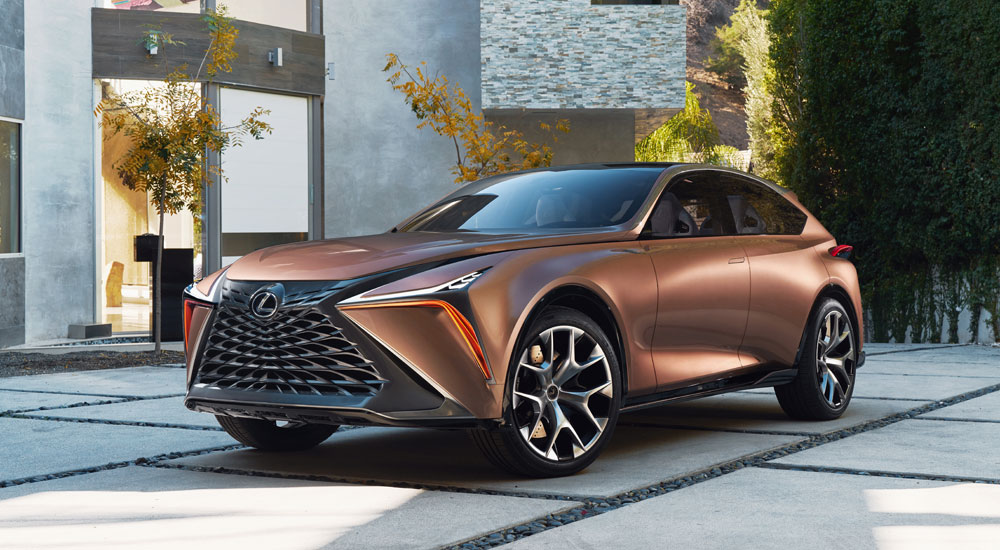Lexus may ride LF-1 to higher ground
DETROIT — The LF-LC sports car concept Lexus unveiled at the 2012 Detroit auto show was mostly a styling exercise. Reaction was so positive that the concept made it to production as the stunning LC 500 halo coupe that went on sale last year.
At the introduction of the LF-1 Limitless crossover concept at this year's Detroit show, Lexus' U.S. team wasn't waiting for audience input to push for headquarters to send a production version — immediately, if not sooner.
"Sawa-san," Lexus General Manager Jeff Bracken said — addressing Yoshihiro Sawa, president of Lexus International — during the concept's debut, "we have to build this vehicle."
Bracken's eagerness to add an exotically designed "flagship crossover" at the top of Lexus' lineup signals the direction he'd like to take the brand as it slips farther from the luxury sales crown it owned for more than a decade. Rather than follow Mercedes, Audi, BMW and Jaguar into less-expensive, entry-luxury territory to boost sales volumes, he aims to stake out more ground in the upper tiers of luxury, where Lexus has only a thin presence.
It's a logical progression from the LC 500 flagship coupe, which can easily crack $100,000, and the redesigned LS flagship sedan that goes on sale next month at a starting price of nearly $76,000 with shipping.
"If you think about where so much of our volume comes from, it's more in the $35,000-to-$55,000 range," Bracken told Automotive News. "And so that higher-end market in the luxury industry has been ... an area where we haven't been in as much as we'd like to be in."
The LF-1, should it be made, "could be another halo product for us, not only from a standpoint of styling but price positioning," Bracken said on the sidelines of the Detroit auto show.
That doesn't mean Lexus has given up on its quest for sales growth. But the priority will remain on brand image, dealer throughput and the customer experience, Bracken said.
German competitors each have a hundred more U.S. dealerships than Lexus and are pushing into price tiers where Lexus won't go, lest it encroach on its full-line partner, Toyota.
If German brands "dip below $30,000 MSRP or even transaction price, there's a lot of volume there," Bracken said. "And since our strategy is not to go below $30,000, it just makes it a more competitive environment in the luxury industry as we try and fill more premium gaps."
Lexus cut its entry-level hybrid, the CT hatchback, in the U.S. last year as volume dwindled. To take its place, Lexus is developing a small crossover based on the UX Concept vehicle, although Bracken wouldn't give any details.
Lexus also finally introduced a three-row version of its best-selling RX midsize crossover in November. The RXL now trickling out to dealers should add around 15,000 in new sales this year, Bracken said.
With 71.7 percent of Lexus' product mix going to crossovers and SUVs in December, investing in a production version of the LF-1 could be a needed pivot upmarket as the brand matures, analysts said.
"They need to stretch the brand in this direction, and the LC 500 was a great first step," said Karl Brauer, a senior analyst at Kelley Blue Book. "The LF-1 Limitless would be a great follow-up, particularly because as beautiful as the LC 500 is, it has a big flaw: It's a car."
If Lexus wants to steal some real volume from rivals, it needs a crossover in that space, he said.
While the LF-1 is designed around the LS sedan platform, Brauer sees it conceptually as more of an extension of the LC 500, given its styling cues.
Kevin Hunter, president of Toyota's in-house Calty Design Research arm, said the LF-1's break from current Lexus styling toward a more liquid, exotic look eventually could trickle down to other segments.
"One of our key terms at Lexus right now is 'brave design,' " Hunter said at the Detroit show. "We want to take chances."





